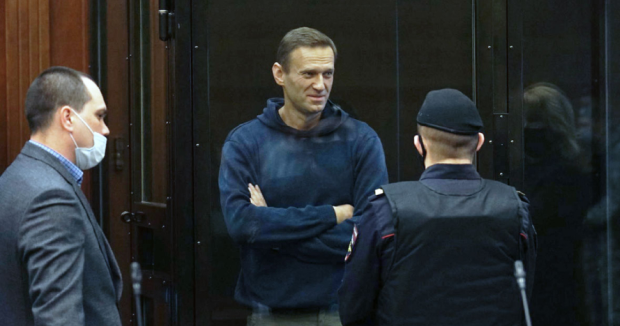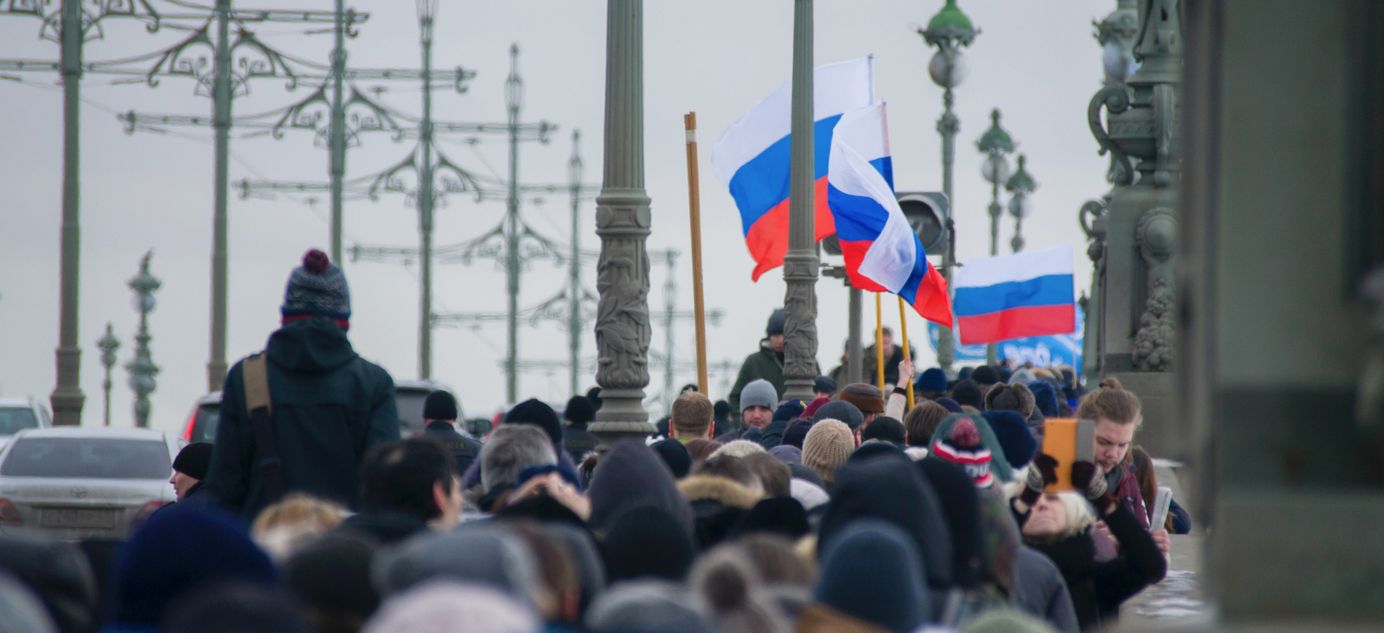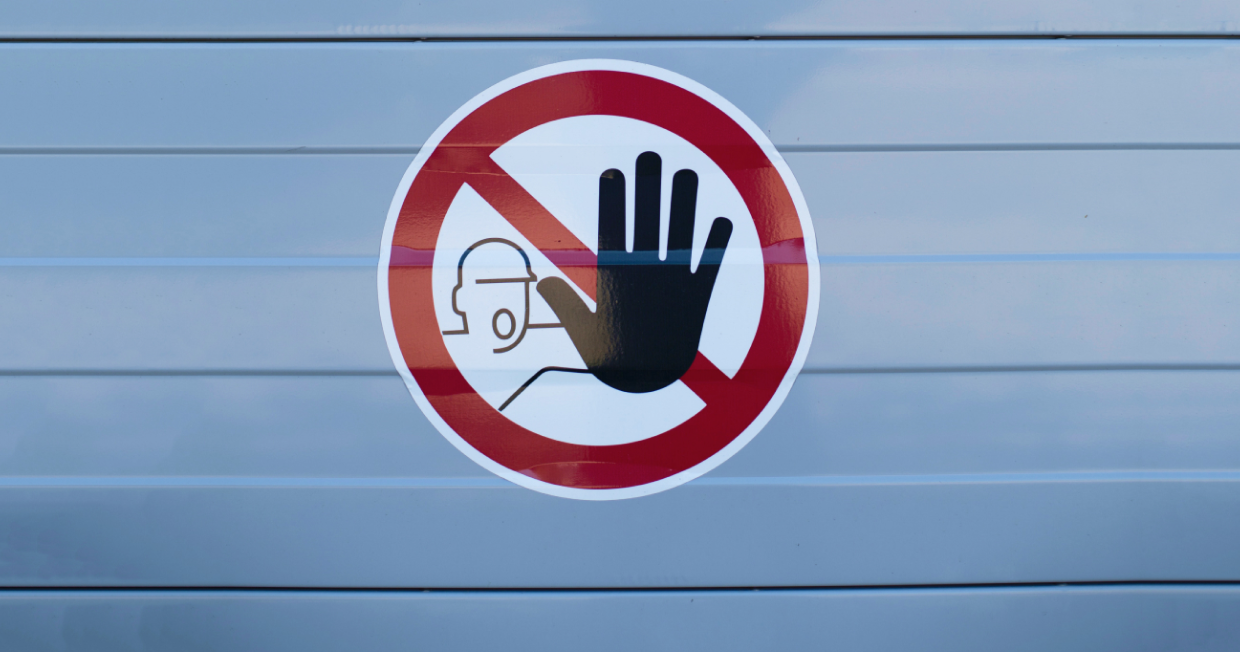
Navalny jailed
Hello! This week our top story is the arrest and intimidation of supporters of opposition leader Alexei Navalny ahead of another round of nationwide protests Sunday. We also look at how Russia’s state propaganda machine has tried to explain evidence of ‘Putin’s palace’, and increasing government efforts to control rising food prices.

Navalny sent to prison
A Moscow court sentenced Navalny to two years and eight months in jail Tuesday. The official case against him was broadly as follows: Navalny was sentenced to 3.5 years on probation in 2014 (when Navalny and his brother were convicted of inflating prices for services provided to the French cosmetics company Yves Rocher). The terms of his probation obliged Navalny to report to the authorities several times a month. However, Navalny often appeared on incorrect days, and then ‘disappeared’ when he went to Berlin for treatment following his August nerve agent poisoning. In this way, he was deemed to have violated the conditions of his probation, and his suspended sentence was replaced with a jail term.
Navalny defended himself by pointing out that in 2017, the European Court of Human Rights (ECHR) ruled Yves Rocher case verdict unfounded and Russia paid 4 million rubles ($54,000) in compensation to the Navalnys. Most importantly, though, Navalny argued the whole case was politically motivated.
The outcome of Navalny’s hearing was clear long before it was announced: in downtown Moscow and St. Petersburg, hundreds of riot police were deployed before the judge announced her decision. The cities looked like they were preparing for mass rioting, or some sort of armed conflict. In the courtroom, Navalny traced a heart on the plastic screens enclosing the dock, and asked his wife, Yuliya, not to worry.
A night of protest
When the court finally announced its decision, about 8:30 pm local time, protesters began gathering in central Moscow. The response of the authorities was furious, with mass arrests, liberal use of truncheons and the closure of several metro stations. In one video you can see how riot police used their batons on a crowd chanting “we’re unarmed!”. Police later acknowledged that simply being in the center of Moscow had been reason enough for arrest that night. Several reporters, including two from The Bell, were arrested. The Bell’s Valeriya Pozychanyuk and Anastasia Stognei, the writer of this newsletter, spent several hours in police custody. Here, Anastasia describes her experience:
We were walking through a crowd on one central Moscow street that was chanting ‘Russia without Putin’ and ‘Putin is a thief’. We passed a Burberry store and had almost reached Tiffany when riot police enclosed us on both sides. The crowd rushed into a nearby alley where about 30 people, mostly women, were pushed against a building by a ring of riot police. There was nowhere to run. So as not to be afraid, protestors sang “Katyusha” (a popular WWII song). We told the police we were journalists, but it made no difference. They pushed us all into the waiting vans and took us to the police precinct.
It later became clear we were lucky: other detainees spent hours driving around Moscow before being taken to a precinct, or were even left in unheated vans overnight. There was no space at the precinct: it was crammed with protesters. A man in civilian clothes yelled orders as we were led into a corridor: “Faces to the fucking wall, hands on the fucking wall, phones in your right hands so I can see the screens.” The walls were ice cold, our palms freezing, and some put their scarves under their hands. We were kept standing there for a long time before our passports and phones were taken away (this is illegal, but a policeman explained: “We didn’t take the phones from you, you gave them to us.”). You very quickly understand you have no rights. The police know that they can get away with anything.
We were all put into different rooms. I found myself in a windowless room with a table and chair. The same man in civilian clothes searched me, and another police officer stood guard. After a few minutes I heard a terrifying cry from the basement: “They’re killing me!”. Another detainee told me later a protester was beaten to try to force him to sign papers. Other protesters were threatened with ‘a trip to the basement’ if they refused to be fingerprinted or unlock their phones (both illegal demands). Later, it emerged one activist detained had a plastic bag put over her head to make her reveal her telephone password.
After an hour, I was led back to the other detainees. They put us in a hall with all the essentials on the wall: a portrait of a youthful Putin, a Russian flag and a TV set. One-by-one, the protesters were called for questioning. All this happened without any legal representation (apparently, no lawyers were allowed into police precincts that night). It felt like something out of Kafka. Detainees were sometimes brought back for endless questions: “Are you a financial analyst? Which shares should I buy?” a policeman asked one of us. In between interrogations, the police watched clips of the demonstrations on TikTok and laughed.
Eventually, about three hours after our arrest, the police accepted we were journalists and let us go. The others weren’t so lucky. Out of more than 20 people in our van, only one woman was able to make a short phone call. The rest have been unable to contact anyone since their arrests. Most received 13-day jail terms. From the one woman able to make a call, we learned what happened when they were taken to court. They spent several hours being held in police vans (the court was overcrowded) while it was -10 degrees Celsius outside. They were not allowed lawyers. After receiving their sentences, they sat in queues for hours at a detention center outside Moscow (a short-spell prison), which was also full to capacity. It was the same story everywhere. Some police vans spent hours looking for somewhere to put detainees. It reached absurdity when a van broke down and the detainees had to get out and push.
In the days following the protests, evidence emerged of severe overcrowding in detention centers in and around Moscow. Up to 25 people were routinely crammed into rooms designed for eight, without mattress, cushions, or bed linen. Well wishers tried to bring food and sanitary items, but there were long queues and prison staff often failed to ‘process’ the packages. Sergei Smirnov, editor-in-chief of the independent media outlet Mediazona, found himself in such circumstances when he was sentenced to 25 days in jail Wednesday for retweeting a joke deemed by a court to have incited participation in a pro-Navalny rally.
Taking stock of the protests
The protests on Tuesday were the third major opposition rally since Navalny returned to Russia in the middle of last month. None of these protests was issued an official permit, which was used by the authorities as a reason to sanction a violent crackdown.
The first protest — on Jan. 23 — saw rallies in more than 125 cities and at least 100,000 people on the streets. Police arrested over 4,000 people. The second protest, the following weekend (Jan. 31), saw a similar turnout, and police cranked up the violence, widely using stun guns for the first time. There were several reports of broken bones, and almost 6,000 people were arrested in 87 cities. The protests Tuesday saw 1,400 people arrested across Russia (of which 1,188 were in Moscow). This means that, since Navalny’s return to Russia, over 11,000 people have been detained. Of these, an unprecedented large number were fined or given short spells in prison.
Navalny in court again
Navalny faced another court appearance Friday, which reached new heights of farce. The hearing was to determine whether he had insulted a WWII veteran following his description of participants in a propaganda clip filmed by state-owned RT as “corrupt lackeys”. Among those in the film was a WWII veteran, whose grandson sued for libel. This case has been a way for pro-Kremlin media to tell an emotive story about how ‘Navalny insulted a war hero’. The hearing lasted several hours: the veteran, wearing a mask, couldn’t be heard via video link, his words were clearly being provided by a judge sitting next to him in his apartment, and a 95-year-old neighbor was called as a witness. The veteran demanded an apology, but then felt unwell and an ambulance was called. Navalny accused the grandson of “cashing in” on his grandfather. To the relief of almost everyone, the hearing was postponed.
What next
What will the Kremlin do? Dmitry Peskov, President Vladimir Putin’s press secretary, insisted “there is no repression in Russia” after Tuesday’s protests. But Reuters cited a source close to the Kremlin on Thursday who suggested that the regime does not see any big risks and — if necessary — is prepared to respond more aggressively. The source held up Belarus and Venezuela as examples of regimes that had survived in the face of more discontent and far weaker economies.
Experts interviewed by The Bell agreed it would be unwise for the Kremlin to assess the situation in terms of Belarus or Venezuela. For one thing, those regimes were helped to survive with Russian funds. For another, there are plenty of counter-examples: Sudan, Tunisia, Egypt. And even if they do, there are risks: the more power handed to the security forces, the greater the risk the security forces will call all the shots.
What will the opposition do? Navalny’s team announced Friday there will be no more rallies until the spring. In the short term, they hope that ‘foreign policy methods’ — i.e. international sanctions — will help get Navalny out of jail. Many of his supporters were bewildered by this apparent climbdown. However, The Bell and independent outlet VTimes spoke to experts who agreed Navalny’s team had few options. Many of them are behind bars, turnout at protests is falling, and it is much harder to get people onto the streets in winter. Navalny’s close allies want to focus on the State Duma elections that are scheduled for fall 2021.
Have recent events made Navalny more popular among ordinary Russians? A survey carried out last month and published Thursday by independent pollster Levada Center suggested Navalny’s infamous ‘Putin’s Palace’ film has had limited impact on public opinion. But there was one hopeful sign for Navalny’s team: the percentage of young people who trust the regime is falling (in the 18-24 age group trust dropped from 68 percent in January 2020 to 51 percent last month).
Business as usual? One key aim for the opposition is to persuade the Russian elite to join them — if they managed this it would mean a seismic political shift. There are some signs that one important group is starting to engage. For many years, business in Russia has been strictly apolitical. An unspoken ‘gentlemen’s agreement’, in force since the early 2000s, means business leaders do not entertain political ambitions and, in return, the authorities leave them in peace. Recently, though, dozens of entrepreneurs have broken this code, publicly criticizing state violence and arbitrary application of the law. Some companies have sent memos to staff with advice about what to do if they are detained at rallies, and some business leaders attended protests themselves. One of these was Dmitry Alexeyev, who founded retail chain DNS and is worth an estimated $500 million. He told The Bell his conscience did not allow him to stay home.
Why the world should care
It’s clear that the threat of sanctions is not a big worry for autocratic leaders. Look at President Alexander Lukashenko in Belarus: pressure from the West did not distract him — even for a moment — from a massive crackdown last year. But in the longer term, it is difficult to cut oneself off from the world and keep a disgruntled population quiet with cash injections. The wider world should understand how significantly the political balance in Russia could change as a result of the Navalny events.





